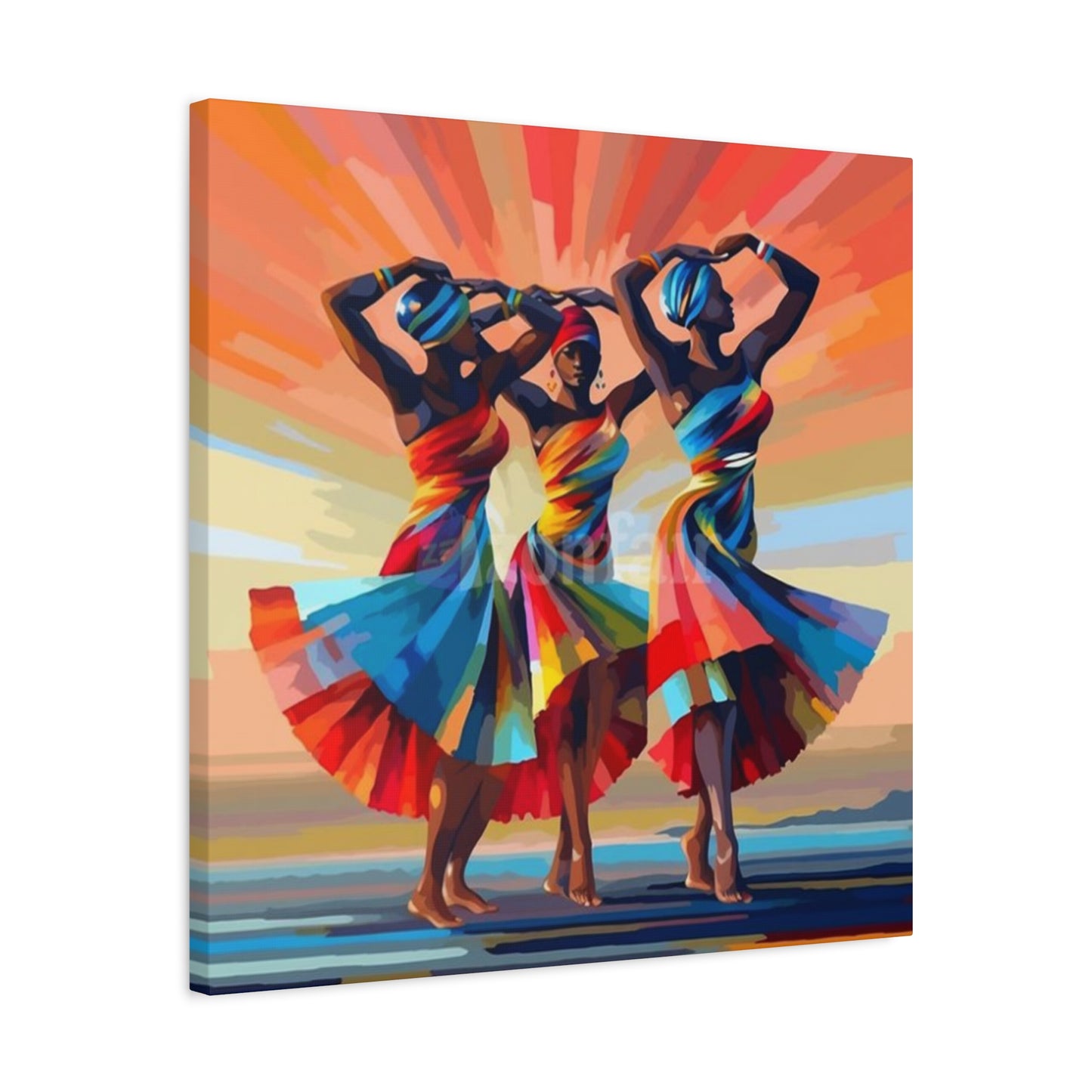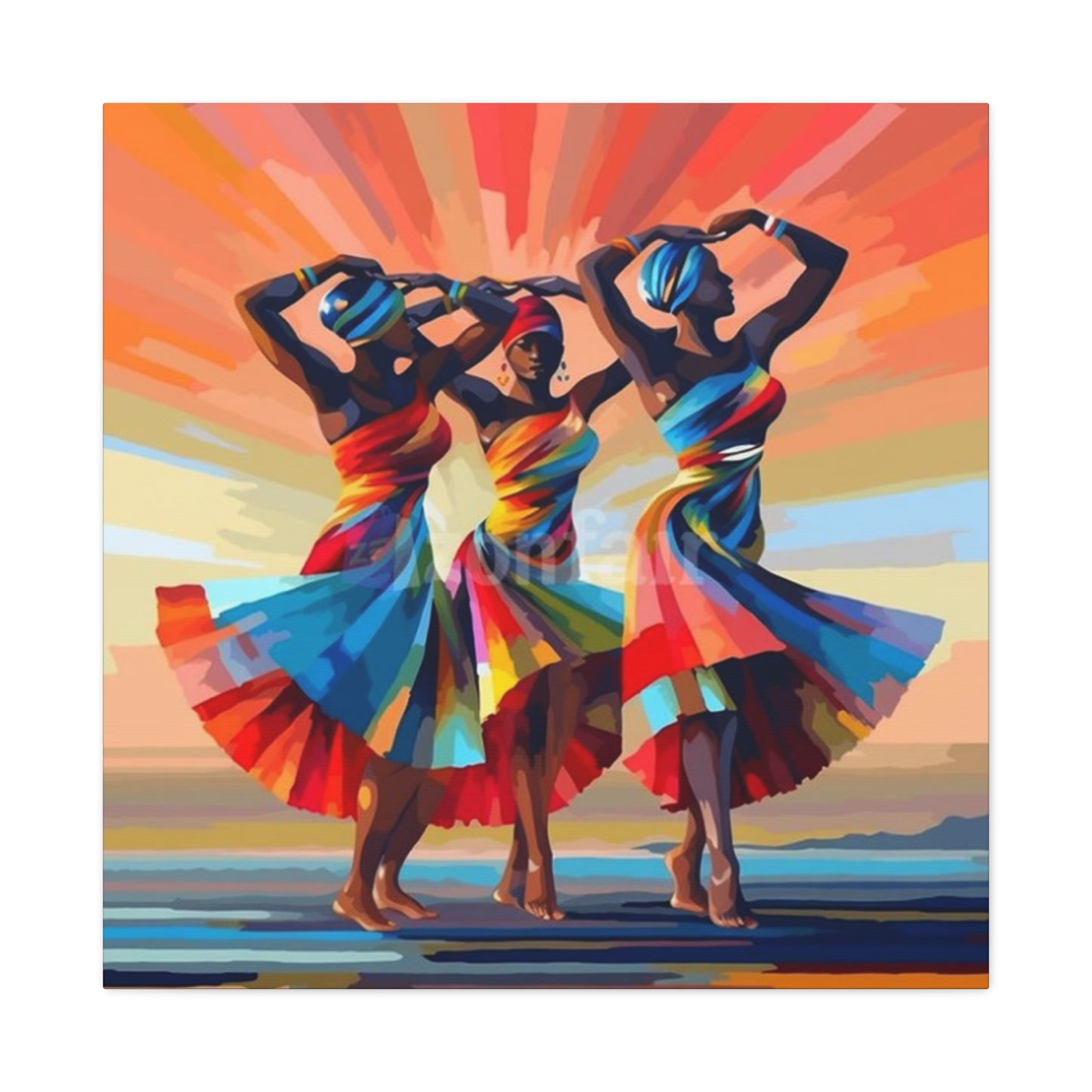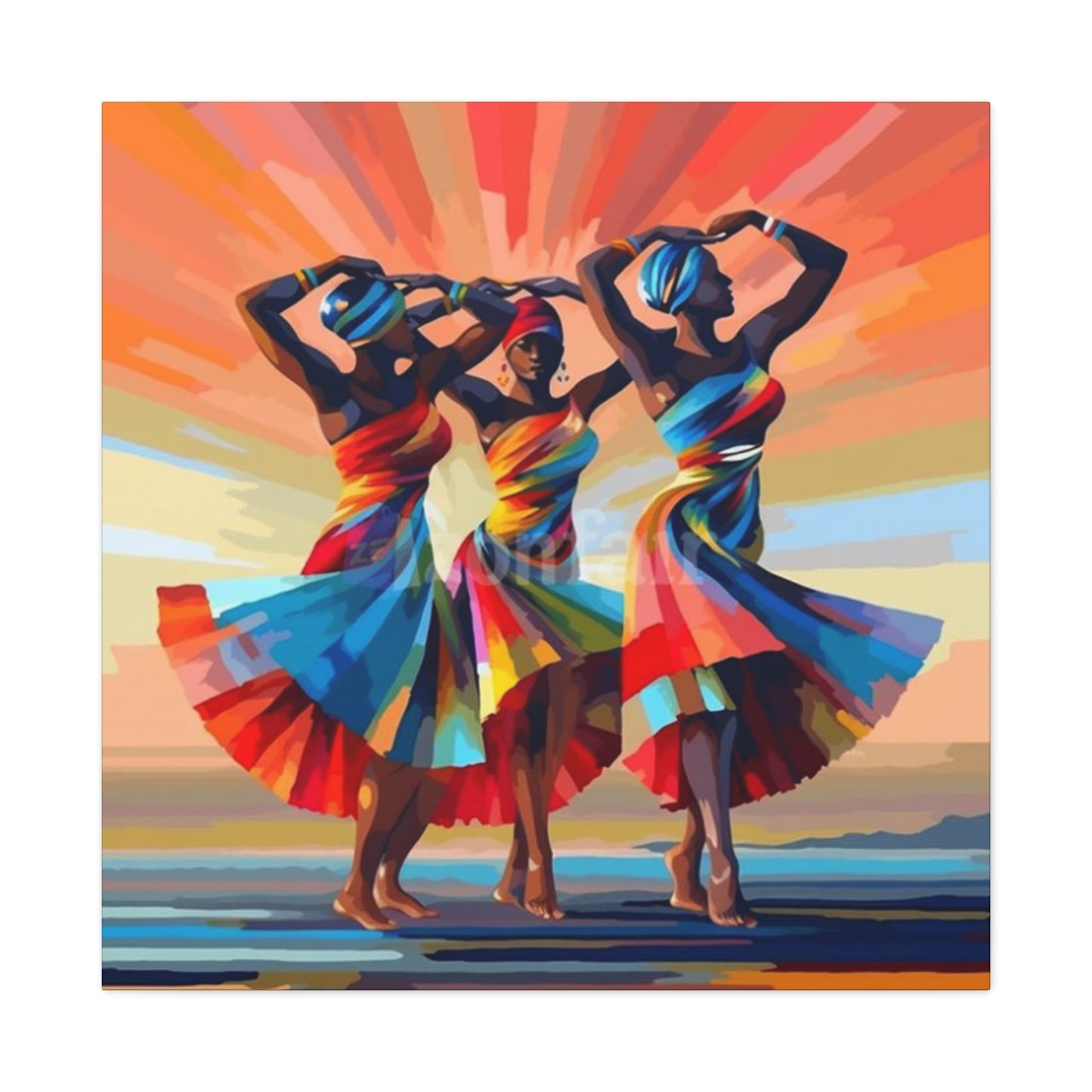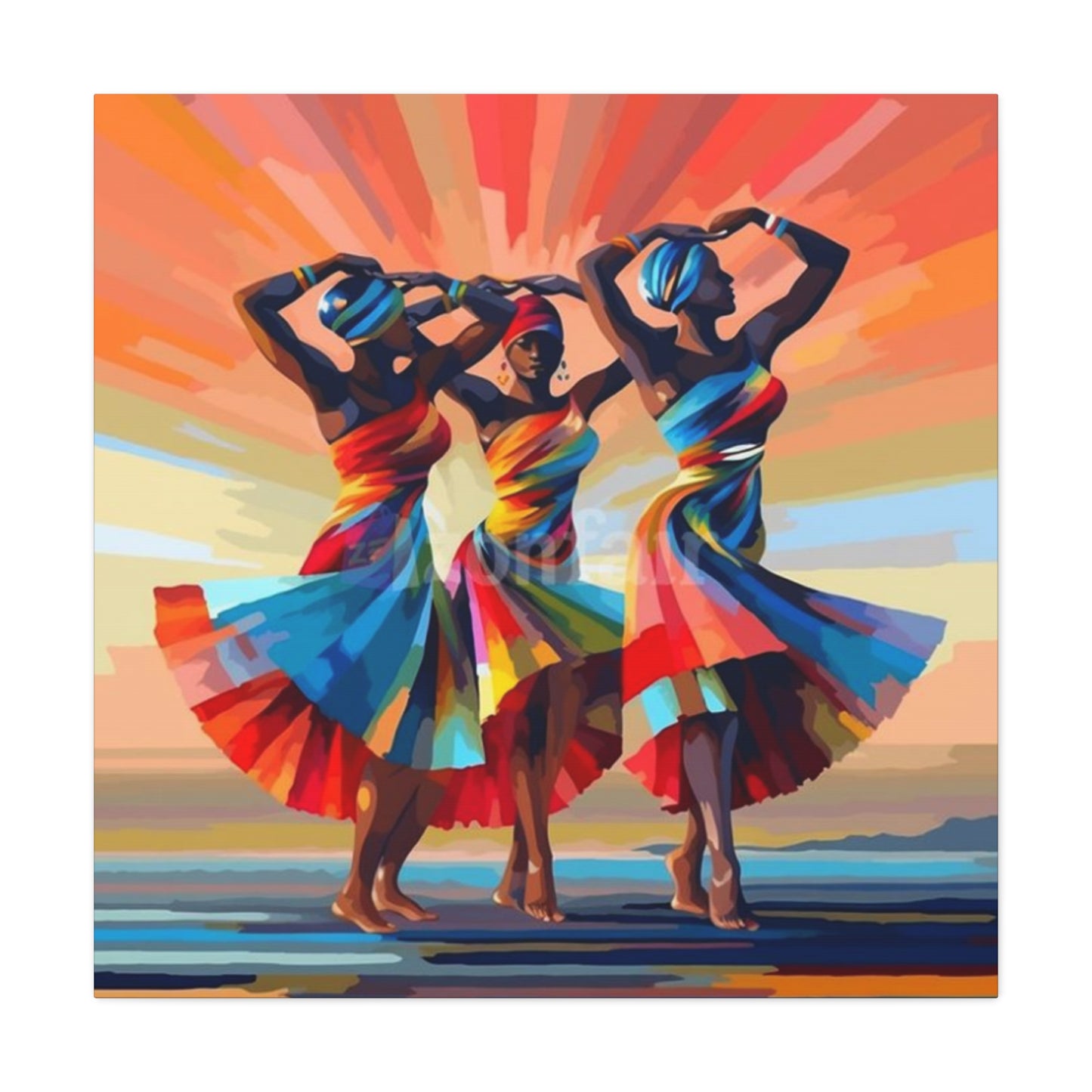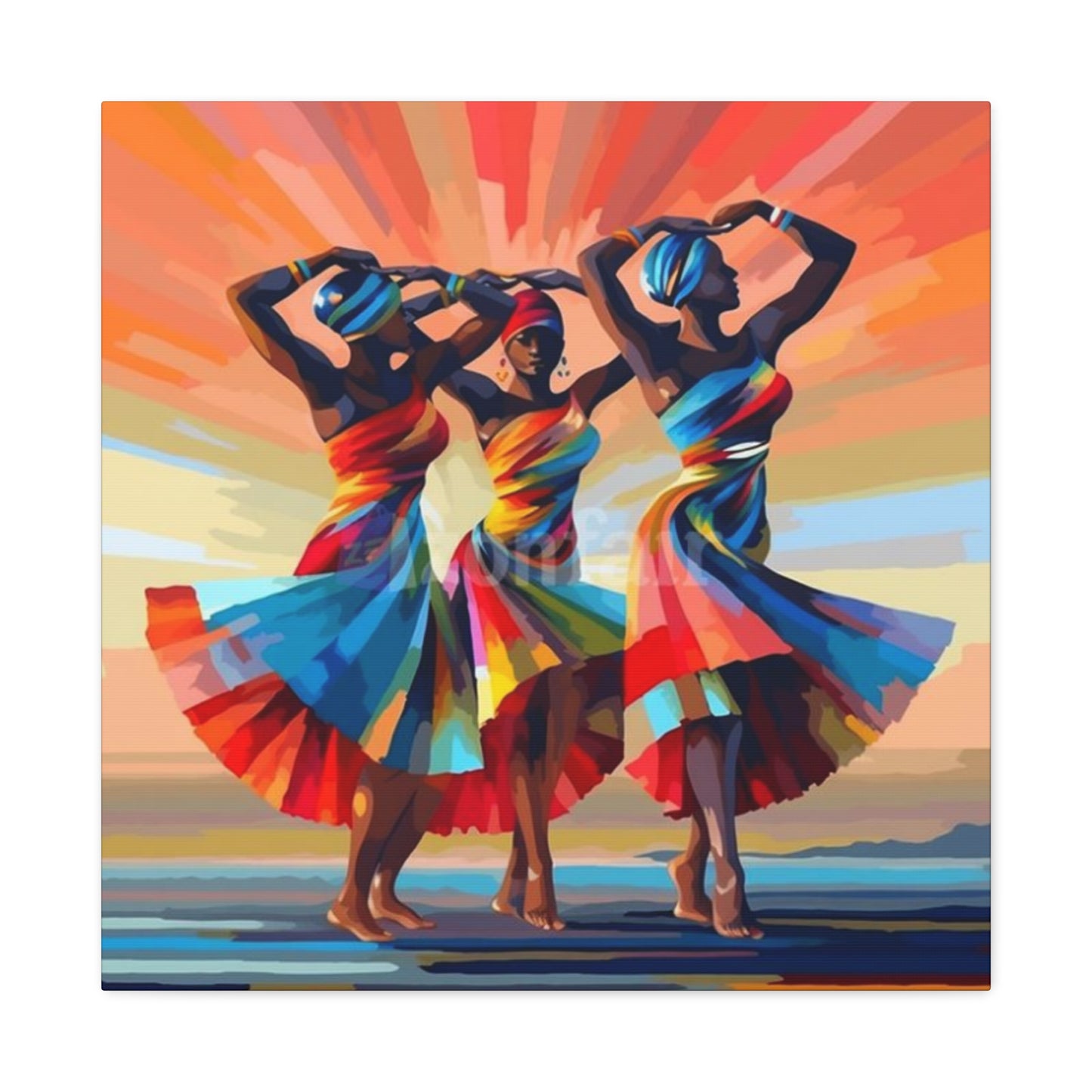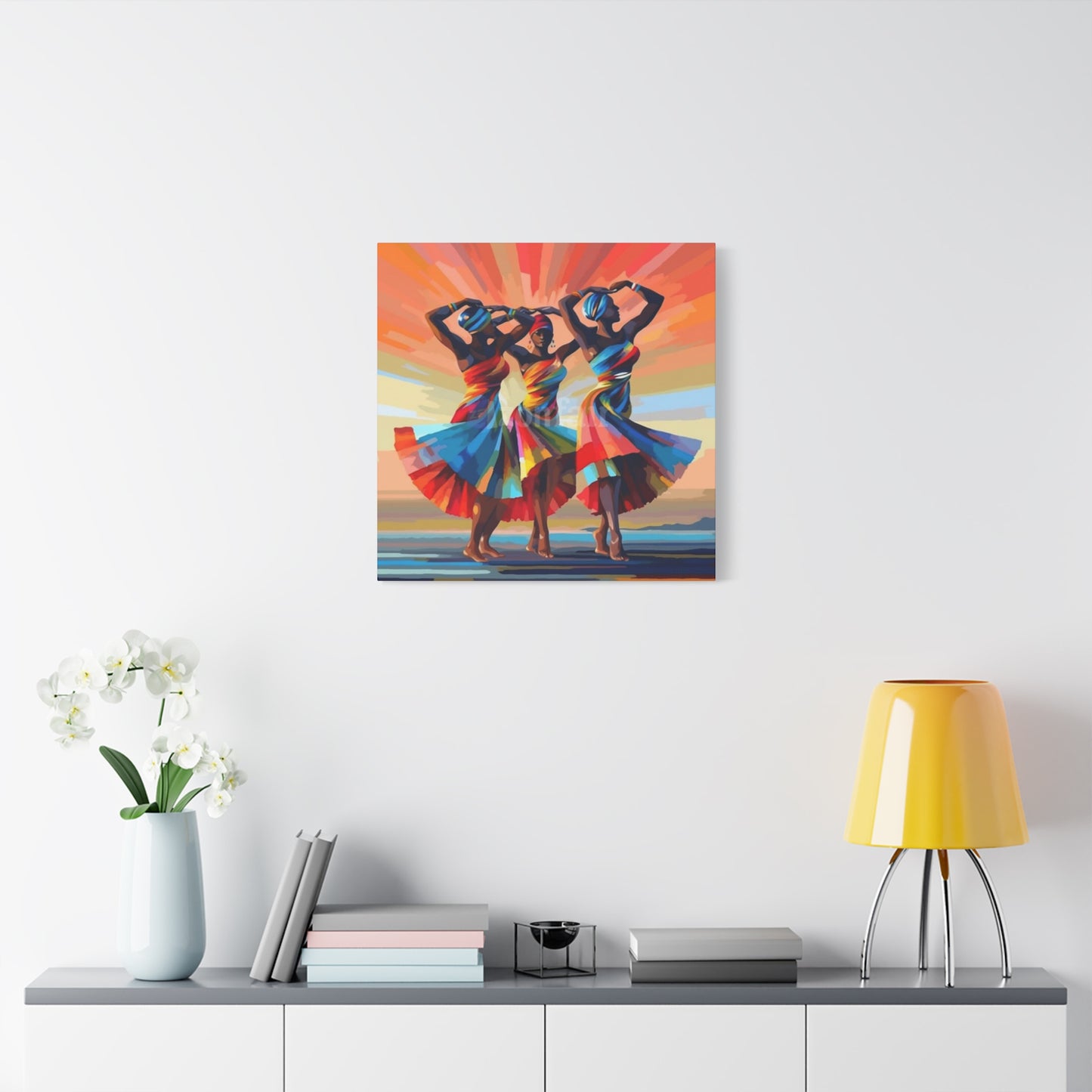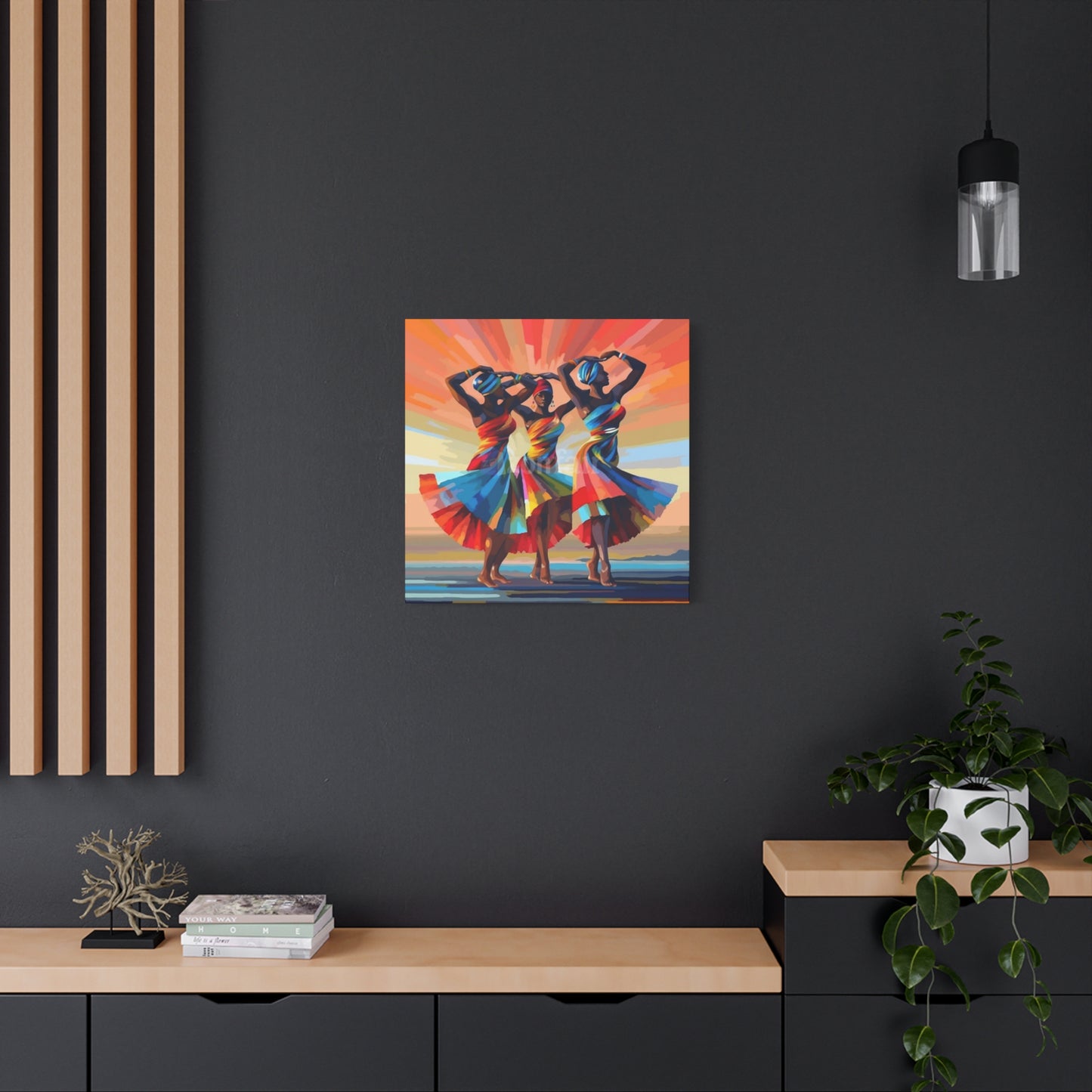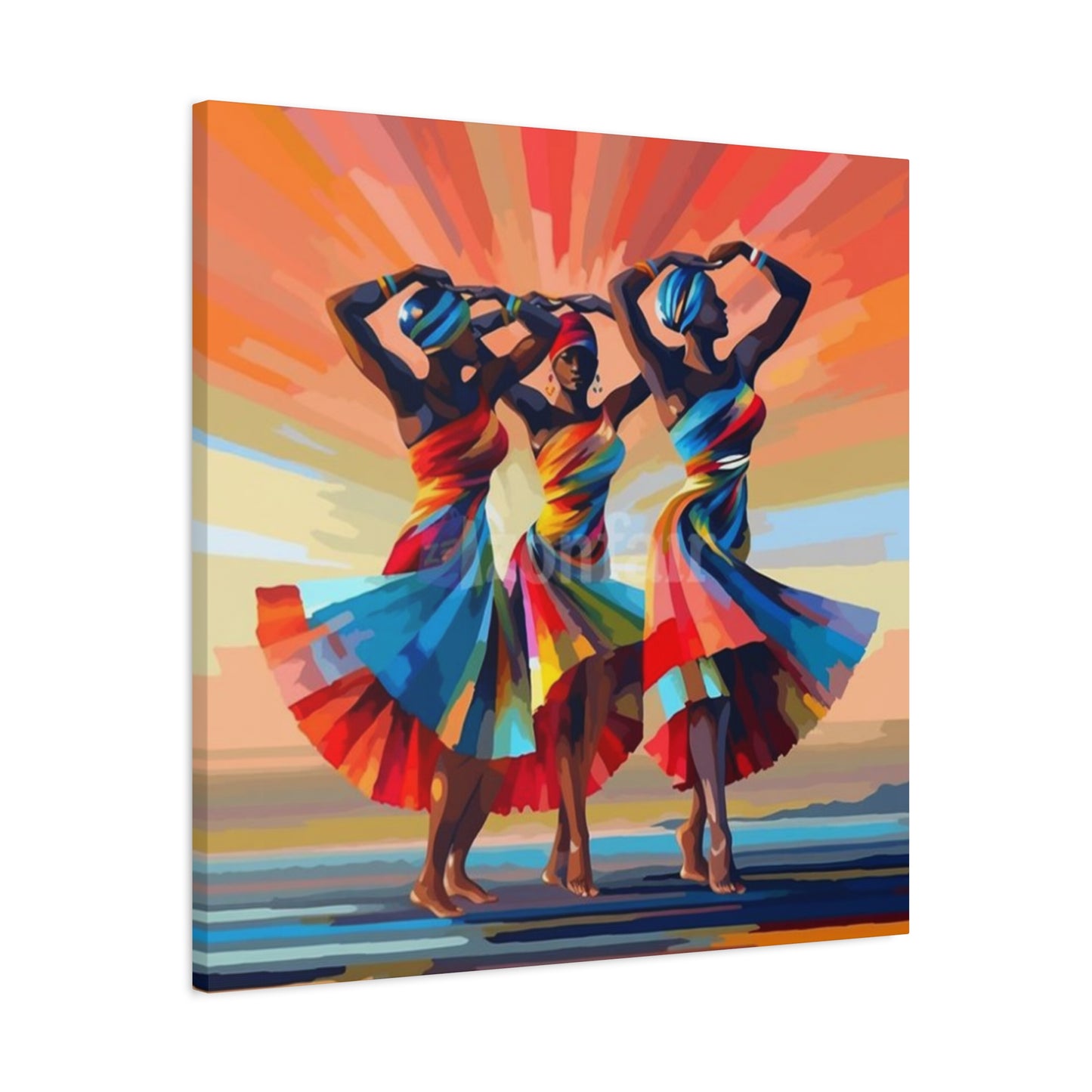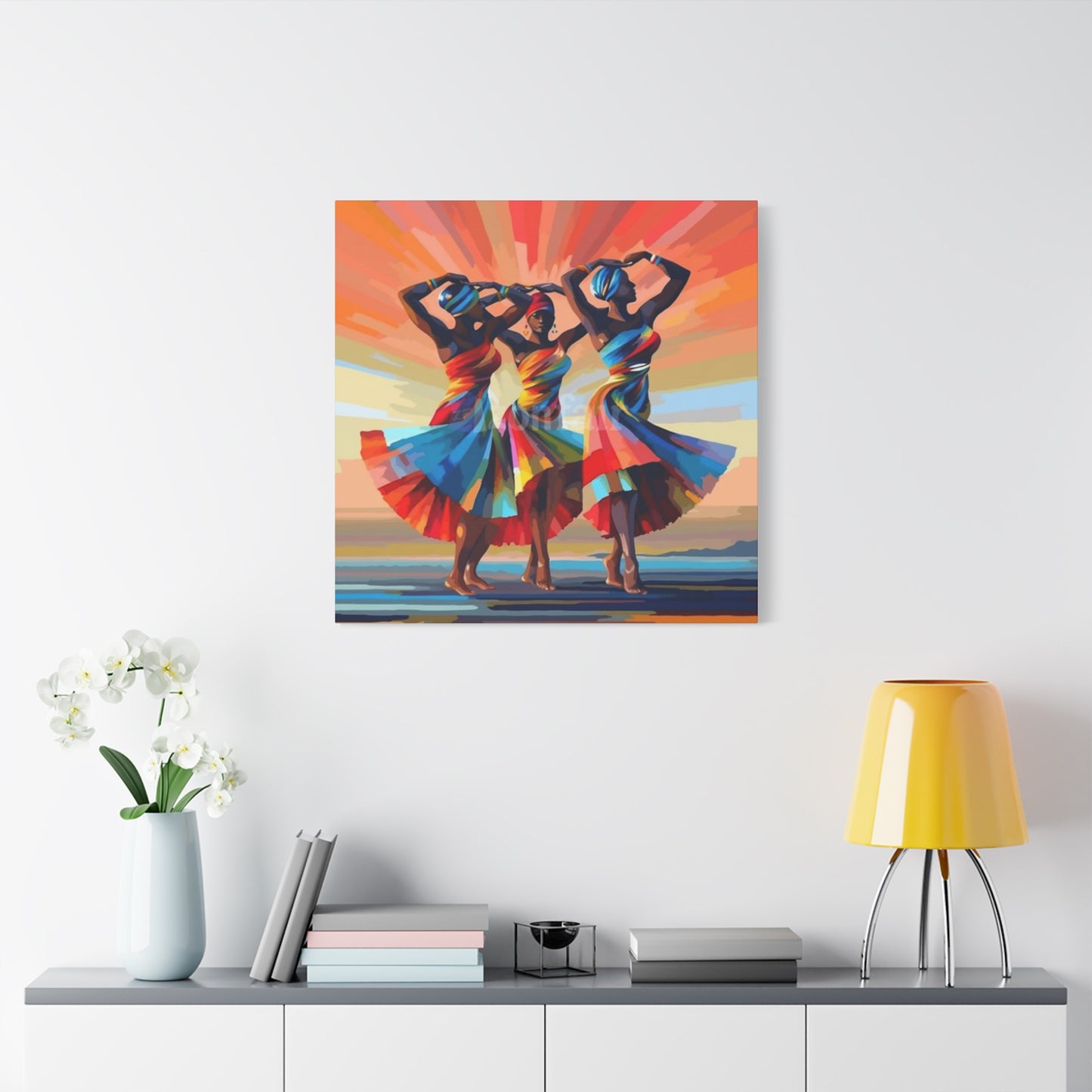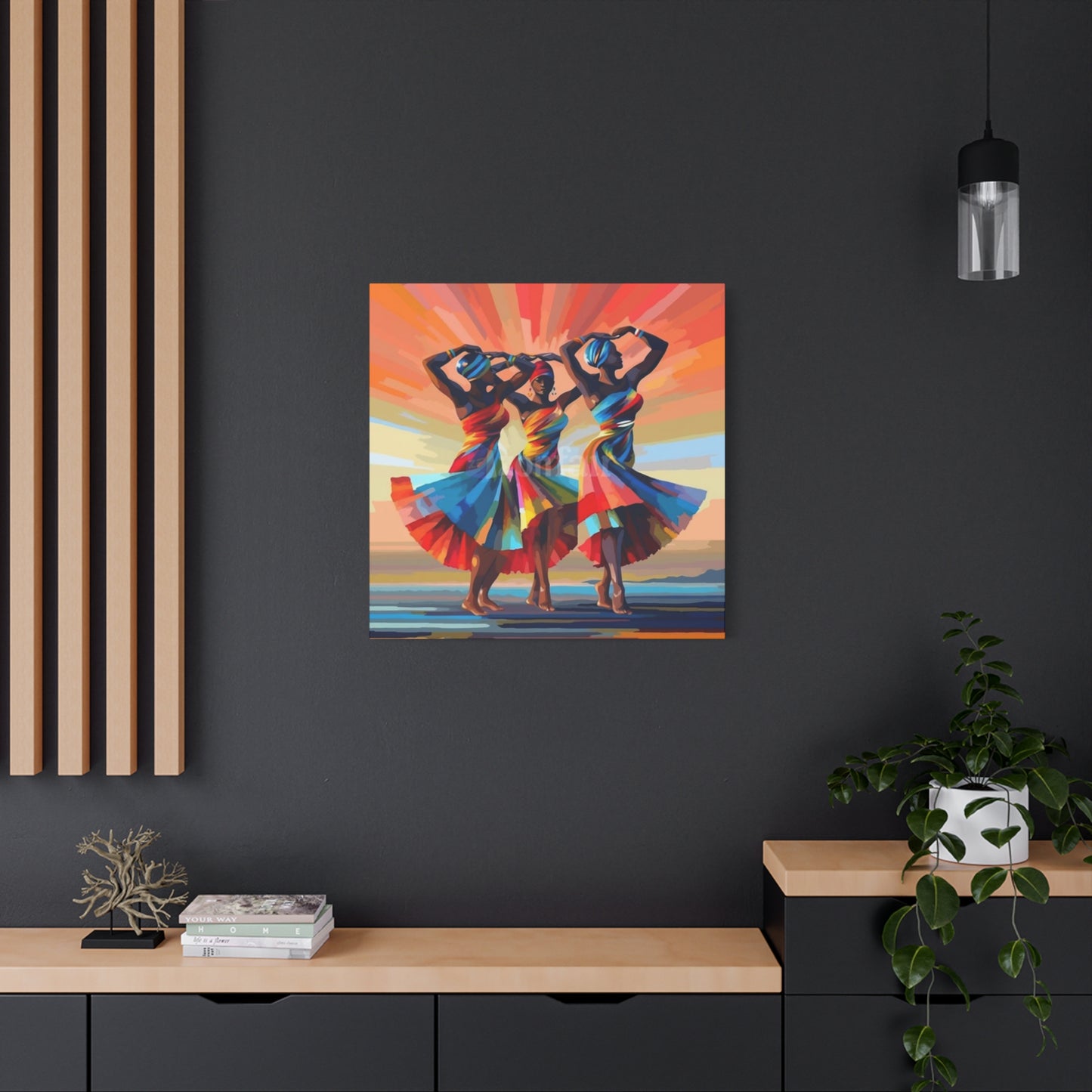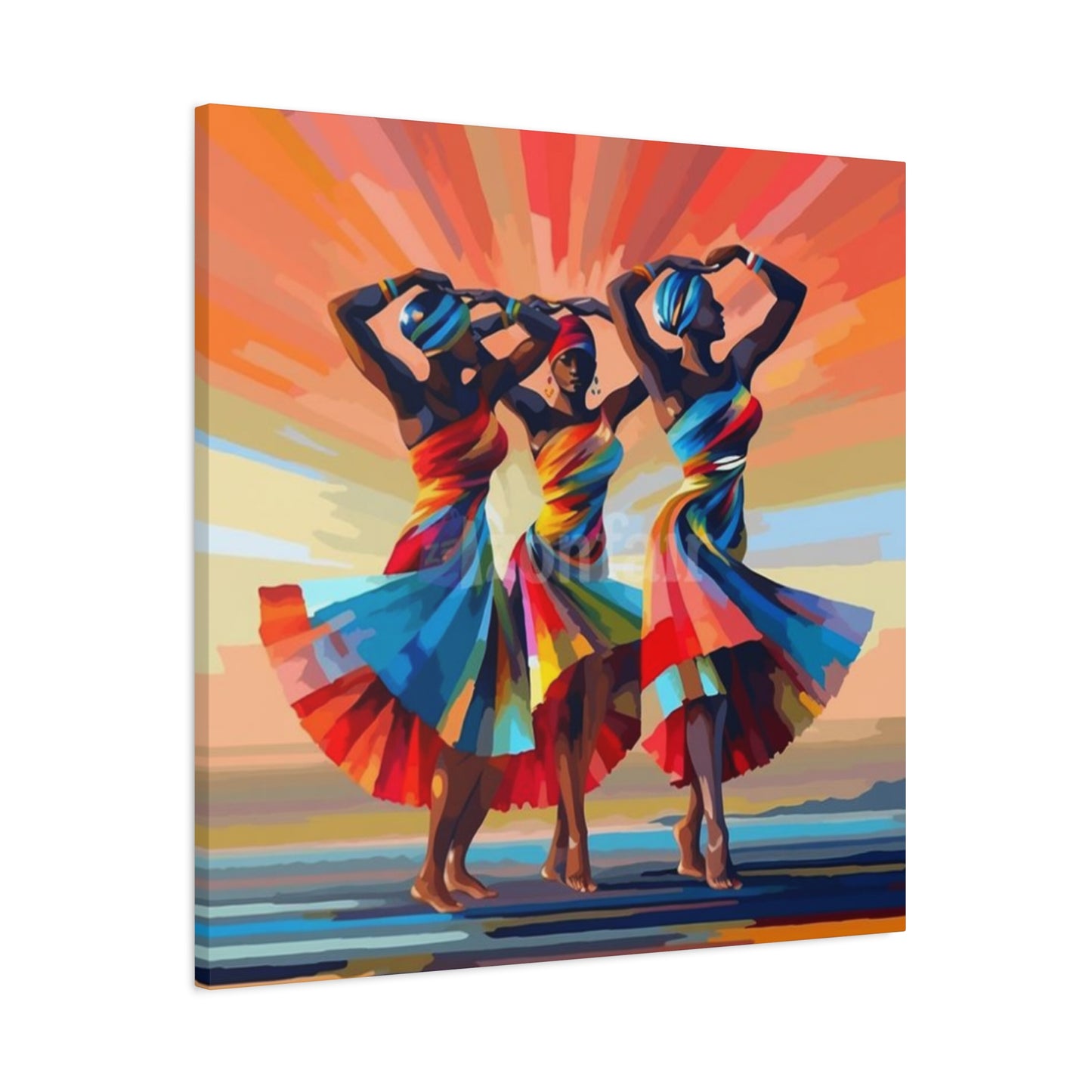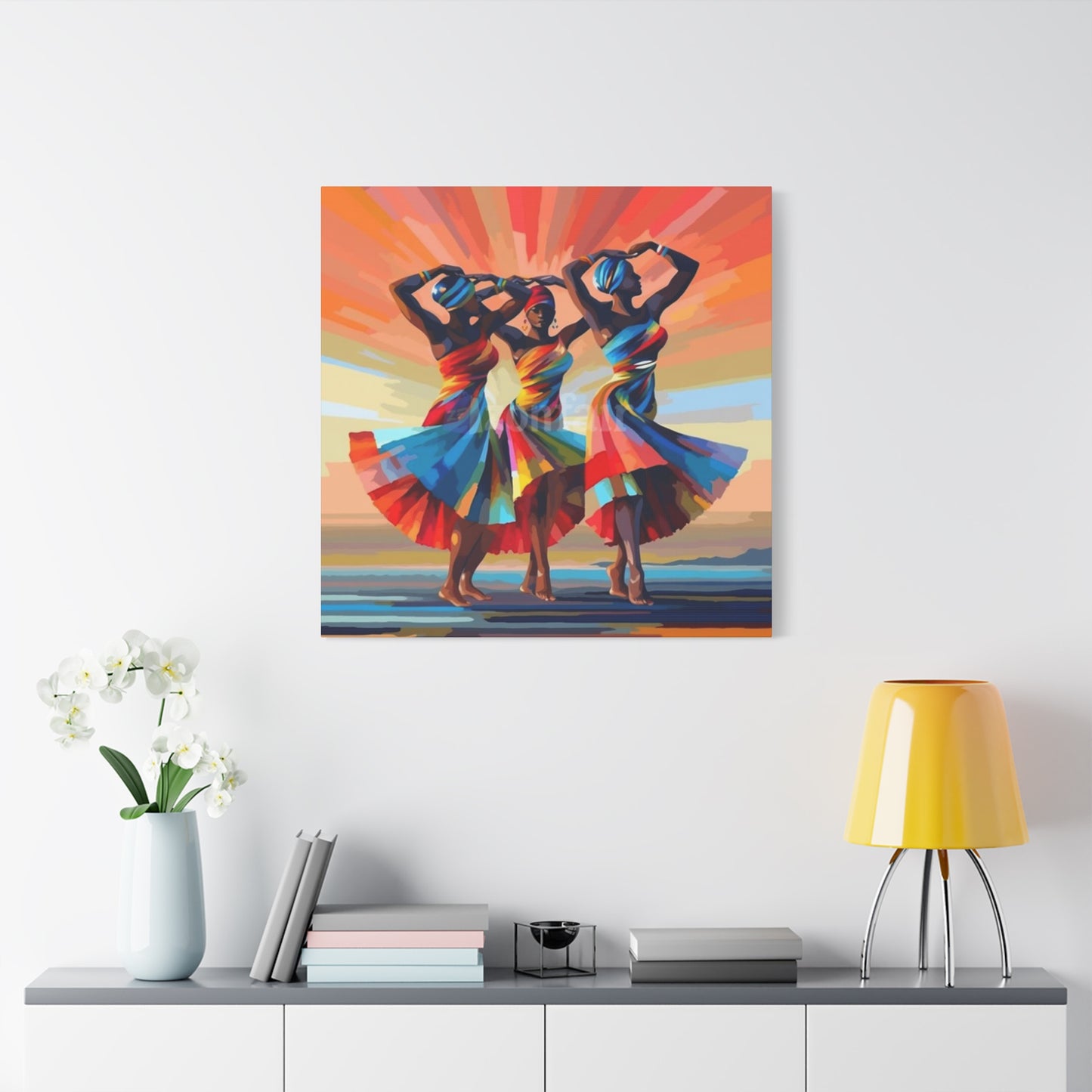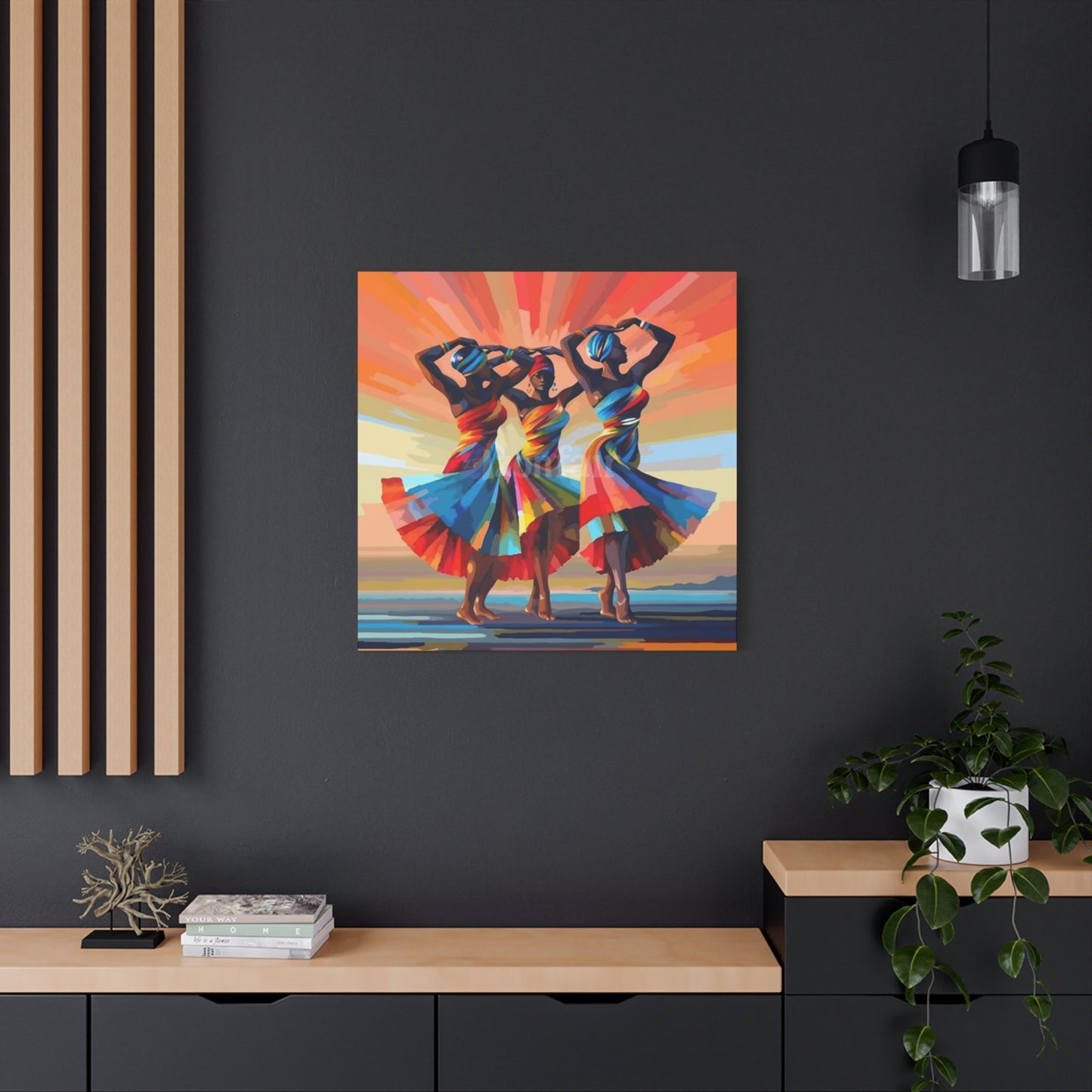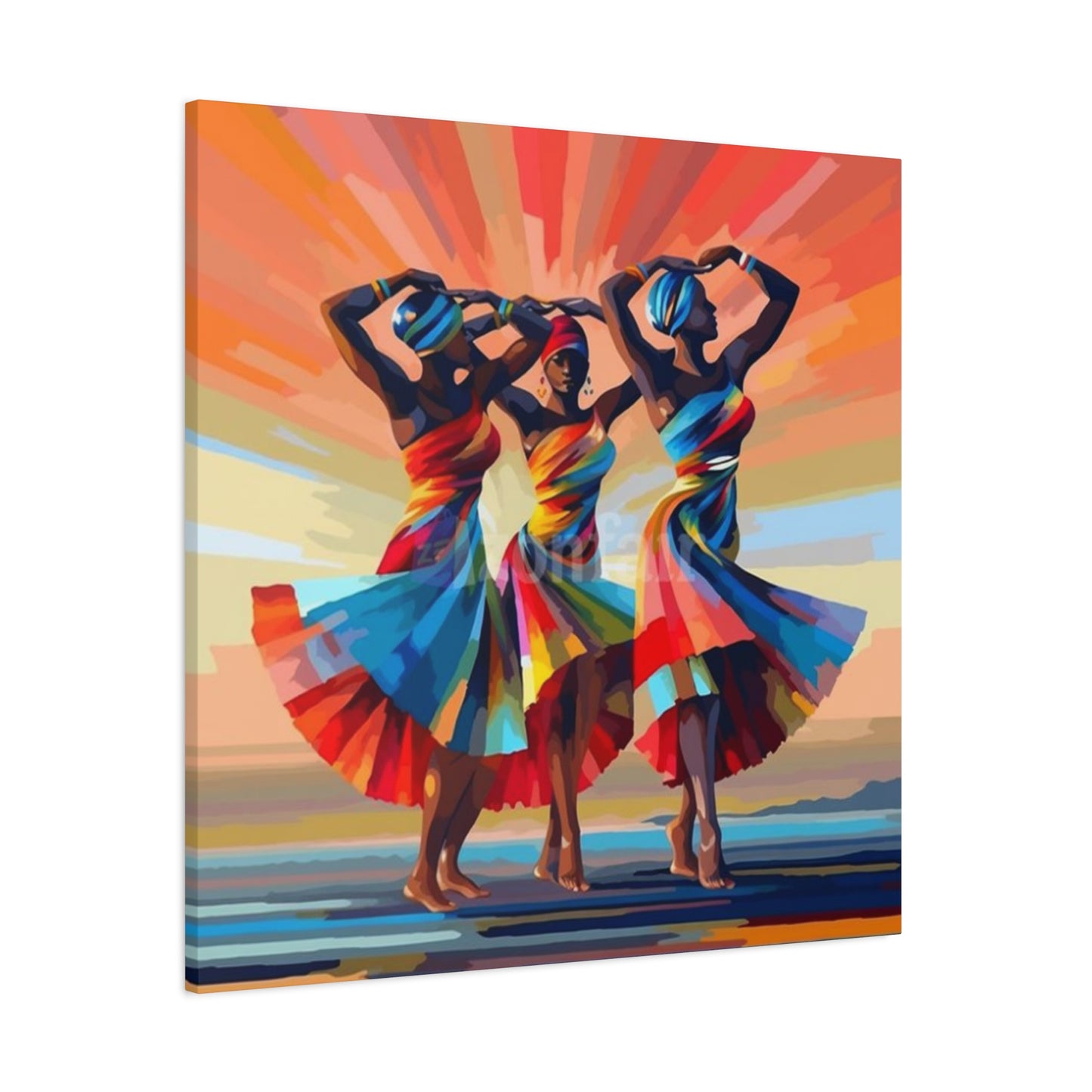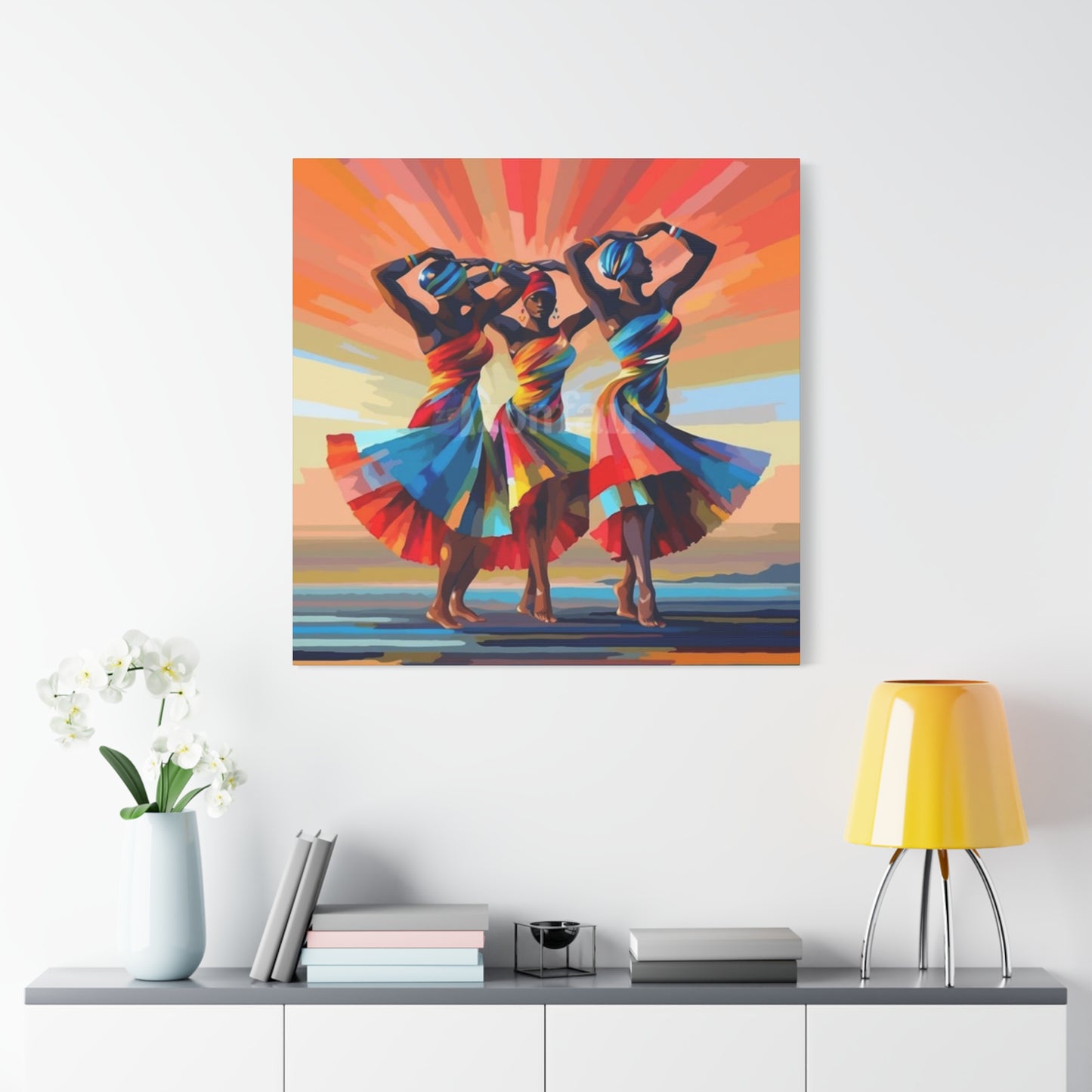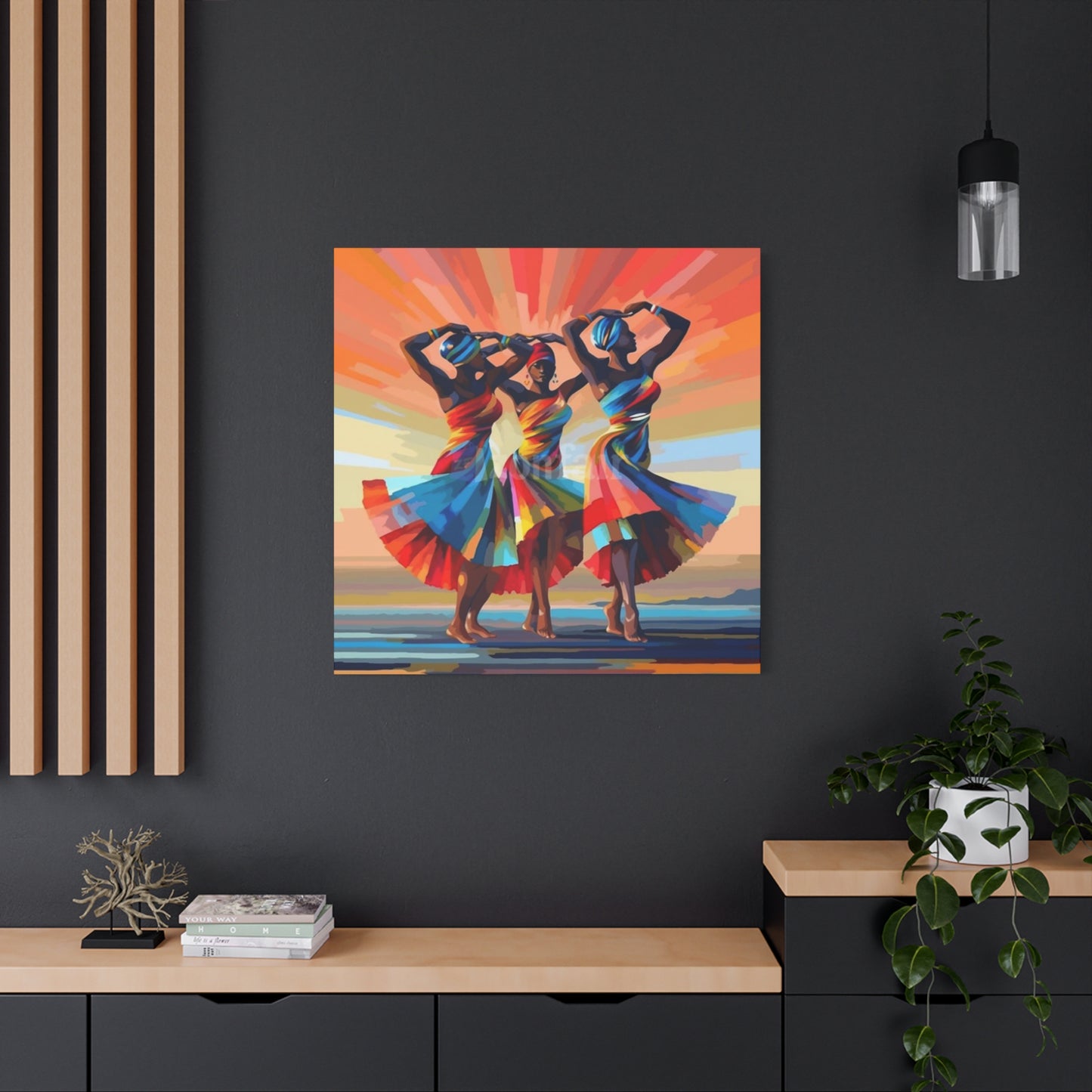Flowing Forms and Feminine Grace: Celebratory Dancing Women Wall Art
The captivating world of dancing women wall art represents one of the most dynamic and emotionally resonant forms of artistic expression available for home decoration today. This remarkable art form captures the essence of movement, grace, and feminine power through various mediums, styles, and interpretations. From classical ballet poses frozen in time to contemporary dance expressions bursting with energy, dancing women wall art offers homeowners an opportunity to infuse their living environments with vitality, elegance, and cultural significance.
The appeal of dancing women wall art extends far beyond mere aesthetic pleasure. These artworks serve as windows into the human experience of joy, freedom, and artistic expression. They represent moments of pure emotion translated into visual form, creating connections between the viewer and the universal language of dance. Whether depicting traditional folk dances from various cultures, modern interpretations of movement, or abstract representations of flowing motion, these pieces bring life and energy to any room they inhabit.
In today's diverse art market, dancing women wall art encompasses an incredible range of styles, mediums, and price points, making it accessible to collectors and decorators with varying tastes and budgets. From hand-painted canvases by renowned artists to affordable print reproductions that capture the same spirit and energy, these artworks offer something for every home and every artistic preference. The versatility of this art form allows it to complement various decorating styles, from minimalist modern homes to richly decorated traditional environments.
Trending Approaches in Dancing Women Artwork
Contemporary dancing women wall art reflects a fascinating blend of traditional techniques and modern artistic sensibilities. Artists today are experimenting with mixed media approaches, combining painting with photography, digital art, and even three-dimensional elements to create pieces that seem to leap off the wall. These innovative techniques capture not just the visual aspects of dance but also attempt to convey the kinetic energy and emotional depth inherent in movement.
Watercolor interpretations of dancing women have gained significant popularity due to their fluid, organic quality that naturally complements the subject matter. The way watercolors blend and flow mirrors the graceful movements of dancers, creating artworks that feel alive and in motion. These pieces often feature soft, dreamy palettes that evoke feelings of serenity and beauty while maintaining the dynamic energy of dance.
Abstract expressionist approaches to dancing women art have also emerged as a powerful trend. These works focus less on realistic representation and more on capturing the essence of movement through bold brushstrokes, vibrant colors, and dynamic compositions. Such pieces appeal to viewers who appreciate art that stimulates the imagination and allows for personal interpretation of the dancing figure's story and emotions.
Contemporary digital art has opened new possibilities for creating dancing women wall art. Digital artists can manipulate photographs, create composite images, and experiment with effects that would be impossible with traditional media. These works often feature dramatic lighting effects, surreal backgrounds, and enhanced colors that create visually striking pieces perfect for modern homes seeking bold artistic statements.
Mixed media collages incorporating dancing women themes have become increasingly popular among artists seeking to create textural, layered works. These pieces might combine painted elements with fabric, paper, metallic accents, and other materials to create rich, complex artworks that reward close examination while maintaining their visual impact from a distance.
Photography-based dancing women art continues to evolve with advances in camera technology and digital processing. High-speed photography can capture moments of dance that the human eye cannot perceive, creating dramatic freeze-frame images that reveal the beauty of movement in unprecedented detail. These photographs are often enhanced with artistic processing to create unique wall art pieces.
Minimalist interpretations of dancing women have found favor among collectors who appreciate clean lines and simplified forms. These works distill the essence of dance down to its most fundamental elements, using simple color palettes and geometric shapes to suggest movement and form without unnecessary detail. Such pieces work particularly well in contemporary homes with clean, uncluttered aesthetic preferences.
Cultural fusion in dancing women art has become another significant trend, with artists combining traditional dance forms from various cultures with contemporary artistic techniques. These works celebrate the global nature of dance while creating unique pieces that speak to our interconnected world.
Optimal Placement Strategies for Dancing Women Artwork
The placement of dancing women wall art requires careful consideration of both the artwork's characteristics and the room's function and layout. These dynamic pieces work best when given adequate visual breathing room and appropriate lighting to showcase their energy and detail. Understanding how to position these artworks effectively can transform not just the appearance of a room but also its emotional atmosphere.
Living rooms represent ideal locations for dancing women wall art because these gatherings allow multiple viewers to appreciate and discuss the artwork. Large-scale pieces work particularly well above sofas or as focal points on feature walls, while smaller works can be grouped to create gallery-style displays. The key is ensuring that the artwork is positioned at appropriate eye level for comfortable viewing from the room's primary seating areas.
Dining areas benefit tremendously from dancing women wall art because the celebratory nature of dance complements the social aspects of shared meals. These artworks can create conversation starters and contribute to a festive atmosphere that enhances dining experiences. Consider pieces that incorporate warm colors or joyful expressions to complement the convivial nature of dining spaces.
Bedrooms can accommodate more intimate or romantic interpretations of dancing women art. Softer, more contemplative pieces work well in these personal retreat areas, while still maintaining the uplifting energy that dance-themed artwork provides. Consider the bedroom's color scheme and overall mood when selecting pieces for these private environments.
Hallways and corridors present excellent opportunities for creating dramatic visual impact with dancing women wall art. These transitional areas can accommodate series of related pieces that tell a story or show progression of movement as viewers walk past. Long horizontal pieces or vertical triptychs work particularly well in these narrow areas.
Home offices and study areas can benefit from the inspirational qualities of dancing women art. These pieces can serve as creative catalysts and mood elevators during work sessions, while their dynamic energy can help combat the static nature of desk-bound activities. Choose pieces that energize without being overly distracting from work tasks.
Entryways and foyers offer opportunities to make strong first impressions with dancing women wall art. These areas can accommodate bold, welcoming pieces that set the tone for the entire home. Consider the size and scale of the entry area when selecting artwork, ensuring that pieces are proportional to the architectural elements.
Staircases provide unique opportunities for vertical displays of dancing women art. The ascending or descending nature of stairs naturally complements the upward or flowing movements often depicted in dance art. Consider how pieces will be viewed from different angles and elevations along the staircase.
Kitchen areas, while less traditional for fine art display, can accommodate dancing women art that celebrates the joy of cooking and gathering. Choose pieces that can withstand potential moisture and temperature fluctuations while contributing to a warm, welcoming atmosphere.
Bathroom and powder room installations require careful consideration of humidity and moisture levels, but can create surprising and delightful discoveries for guests. Smaller pieces or those with appropriate protective finishes work best in these environments.
Harnessing Color Psychology in Dance-Themed Women's Art
Color plays a crucial role in the emotional impact and aesthetic success of dancing women wall art. Understanding how different colors affect mood and perception can help collectors choose pieces that not only look beautiful but also create the desired atmosphere in their homes. The relationship between color and movement in art is particularly important when the subject matter involves dance, as colors can enhance the sense of motion and energy.
Warm color palettes in dancing women art create feelings of energy, passion, and vitality. Red tones suggest power and intensity, making them perfect for pieces depicting dramatic or passionate dance forms like flamenco or tango. Orange hues convey enthusiasm and joy, working well for folk dance interpretations or celebratory movement pieces. Yellow tones bring sunshine and happiness to dancing figures, creating uplifting artworks that brighten any room.
Cool color schemes in dancing women wall art tend to evoke feelings of grace, serenity, and elegance. Blue tones suggest fluidity and peace, making them ideal for pieces depicting ballet or contemporary dance forms that emphasize flowing movements. Purple hues add mystique and sophistication, perfect for artistic interpretations that blend dance with fantasy or spiritual themes. Green tones connect dancing figures with nature and growth, creating harmonious pieces that work well in various home environments.
Monochromatic approaches to dancing women art can create powerful visual statements while offering decorating flexibility. Black and white pieces provide timeless elegance and work with virtually any color scheme. These artworks often emphasize form, shadow, and movement through contrast rather than color, creating dramatic effects that draw viewers into the dance narrative.
Metallic accents in dancing women art add luxury and sophistication while catching and reflecting light in ways that enhance the sense of movement. Gold tones suggest celebration and richness, while silver accents provide modern elegance. Copper and bronze tones add warmth and earthiness to dancing figures, creating connections between the art and natural elements.
Gradient and ombre effects in dancing women wall art create smooth transitions that mirror the flowing nature of dance movements. These techniques can suggest motion blur or the passage of time, adding dynamic elements to static artworks. Artists often use these color transitions to guide the viewer's eye through the composition, enhancing the narrative flow of the piece.
Contrasting color combinations in dancing women art create visual excitement and energy that mirrors the dynamic nature of dance itself. Complementary colors like blue and orange or purple and yellow create vibrant tensions that make artworks pop off the wall. These bold approaches work well in contemporary settings where dramatic visual impact is desired.
Seasonal color adaptations allow dancing women wall art to complement changing home decorating schemes throughout the year. Spring palettes with soft pastels and fresh greens celebrate renewal and growth. Summer colors featuring bright, saturated hues reflect energy and celebration. Autumn tones with rich oranges, reds, and golds suggest harvest festivities. Winter palettes with cool blues and whites evoke ice dancing or winter celebrations.
Cultural color significance adds deeper meaning to dancing women art by incorporating traditional color associations from various dance traditions. Understanding these cultural connections can help collectors choose pieces that honor specific dance forms while creating meaningful decorative statements in their homes.
Budget-Conscious Dancing Women Artwork Solutions
Creating a beautiful collection of dancing women wall art doesn't require a substantial financial investment. Today's art market offers numerous affordable options that allow decorators to enjoy the beauty and energy of dance-themed artwork without exceeding their budgets. Understanding these cost-effective alternatives can help anyone incorporate this dynamic art form into their home decorating scheme.
Print reproductions of famous dancing women artworks offer an excellent entry point for budget-conscious collectors. High-quality digital printing technology now produces reproductions that capture much of the detail and color accuracy of original works while remaining affordable. These prints can be found through various online retailers, art reproduction services, and even some traditional brick-and-mortar stores.
Local art fairs and craft shows often feature emerging artists selling original dancing women artwork at reasonable prices. These venues provide opportunities to discover unique pieces while supporting local artistic communities. Many artists at these events are willing to negotiate prices, especially toward the end of shows when they prefer to sell remaining pieces rather than transport them back to studios.
Student art exhibitions and school art sales frequently include dancing women themed pieces created by developing artists. These works may lack the polish of professional artists but often display fresh perspectives and creative energy that make them appealing decorative choices. Additionally, purchasing student work helps support emerging artists at the beginning of their careers.
Photography-based dancing women art tends to be more affordable than painted works while still providing striking visual impact. Dance photographers often sell prints of their work at reasonable prices, and the dramatic lighting and composition typical of dance photography creates compelling wall art that works well in various home settings.
Digital art platforms and print-on-demand services have revolutionized access to affordable dancing women wall art. Artists can offer their digital creations as prints without the overhead costs associated with traditional art sales, passing these savings on to consumers. Many of these platforms allow customers to choose from various size and format options to fit their specific needs and budgets.
Thrift stores, consignment shops, and estate sales occasionally yield surprising finds in the form of dancing women artwork. While these sources require patience and regular searching, they can provide unique pieces at fraction of retail costs. The hunt for these treasures can become an enjoyable hobby in itself.
Swap meets and flea markets often feature vendors selling art prints and reproductions at competitive prices. These venues typically offer more room for negotiation than traditional retail environments, and vendors may be willing to provide discounts for multiple purchases or end-of-day sales.
Online auction sites provide access to both original and reproduction dancing women artwork from sellers worldwide. These platforms often feature bidding systems that can result in bargain purchases, though buyers should research sellers and return policies before making significant purchases.
Art clubs and community organizations sometimes organize group purchases or bulk ordering arrangements that reduce individual costs for members interested in dancing women artwork. These cooperative buying approaches can make higher-quality pieces more affordable while building community connections among art enthusiasts.
Creative DIY Dancing Women Artwork Projects
Creating original dancing women wall art through do-it-yourself projects offers both financial savings and personal satisfaction. These projects allow individuals to customize artwork to their specific preferences, color schemes, and size requirements while expressing their creativity. DIY dancing women art projects can range from simple crafts suitable for beginners to more complex undertakings that challenge experienced creators.
Silhouette dancing women art represents one of the most accessible DIY projects for beginners. Using black paper or paint against contrasting backgrounds, creators can capture the essence of dance through dramatic shadow effects. These projects require minimal artistic skill while producing sophisticated-looking results that work well in contemporary home settings. Templates and stencils can provide guidance for those less confident in their drawing abilities.
Collage techniques offer endless possibilities for creating unique dancing women artwork using magazine cutouts, fabric scraps, sheet music, and other materials. These mixed-media approaches allow creators to incorporate personal elements and meaningful materials into their artworks. The layered nature of collages creates visual depth and texture that adds interest to finished pieces.
Photography-based DIY projects allow creators to capture their own dancing women images and transform them into wall art through various processing techniques. Digital editing software can enhance photographs with artistic effects, color adjustments, and compositional improvements. Even smartphone cameras and free editing apps can produce quality results suitable for home display.
Stencil-based dancing women art projects provide structure for those who want to create painted pieces without freehand drawing skills. Commercial stencils are available in various sizes and styles, or creators can make their own using cardboard or plastic sheets. These projects work well on canvas, wood, or even directly on walls for larger installations.
String art interpretations of dancing women create unique textural pieces that add dimensional interest to wall displays. These projects involve creating outlines of dancing figures using nails and colored string or thread. The geometric patterns created by the string intersections add modern aesthetic appeal while maintaining the graceful lines of the dancing form.
Fabric-based dancing women art projects can incorporate quilting, applique, or textile painting techniques to create soft artworks with rich textures. These pieces work particularly well in bedrooms or other areas where softer artistic elements are preferred. Fabric choices can be coordinated with existing room decorations for seamless integration.
Mosaic techniques applied to dancing women subjects create brilliant, light-reflecting artworks using broken tiles, glass, or ceramic pieces. While these projects require more time and patience, the finished results provide unique pieces that catch and reflect light in ways that enhance the sense of movement inherent in dance subjects.
Watercolor resist techniques using masking fluid or wax allow DIY artists to create ethereal dancing women artworks with flowing, organic qualities. These methods can produce professional-looking results even for novice painters by helping control paint flow and creating interesting textural effects.
Mixed-media assemblages combining found objects, personal memorabilia, and traditional art materials can create meaningful dancing women pieces that tell personal stories. These projects might incorporate dance tickets, photographs, costume jewelry, or other items with personal significance to the creator.
Digital art creation using tablets and stylus pens has made original art creation more accessible to those interested in technology-based approaches. Various software applications provide tools for creating sophisticated dancing women artwork that can then be printed and framed for display.
Symbolic Meanings in Dancing Women Artwork
Dancing women wall art carries rich symbolic significance that extends far beyond its aesthetic appeal. Understanding these deeper meanings can enhance appreciation for these artworks while helping collectors choose pieces that resonate with their personal values and aspirations. The symbolism embedded in dancing women art connects viewers to universal themes of freedom, joy, creativity, and human expression.
Freedom and liberation represent perhaps the most fundamental symbolic elements in dancing women artwork. Dance itself is an expression of breaking free from physical and emotional constraints, allowing the human spirit to soar beyond everyday limitations. Artworks depicting women in dance celebrate this liberation while inspiring viewers to embrace their own freedoms and creative potentials.
Feminine power and strength emerge as central themes in dancing women art, particularly in contemporary interpretations. These works often challenge traditional representations of women as passive subjects, instead presenting them as active creators of beauty and meaning. The physical strength and control required for dance translate into visual symbols of feminine empowerment and self-determination.
Cultural celebration and heritage preservation find expression in dancing women art that depicts traditional folk dances and cultural ceremonies. These pieces serve as visual documentation of human traditions while celebrating the role of women in maintaining and transmitting cultural knowledge through dance. Such artworks connect viewers to their roots while honoring ancestral wisdom.
Spiritual transcendence appears in dancing women art that draws inspiration from sacred dance traditions found in various world religions and spiritual practices. These pieces often incorporate symbols and imagery suggesting connection to higher powers or states of consciousness achieved through movement and ritual. The flowing, ethereal quality of such artworks can inspire meditation and reflection.
Joy and celebration manifest in dancing women art through exuberant poses, bright colors, and dynamic compositions that convey pure happiness and life affirmation. These pieces serve as daily reminders to embrace joy and find reasons for celebration in everyday life. Their presence in homes can contribute to positive emotional atmospheres that benefit all inhabitants.
Transformation and growth appear in dancing women artwork through imagery that suggests metamorphosis, seasonal change, or personal evolution. Dance itself is transformative, changing both the dancer and observers, and artworks can capture these themes through symbolic elements like butterflies, flowing fabric, or changing seasons incorporated into dance scenes.
Unity and connection emerge in dancing women art depicting group dances or community celebrations. These works emphasize the social aspects of dance and the human need for connection and shared experience. They can inspire viewers to seek community involvement and appreciate the bonds that unite people across cultural and social boundaries.
Mystery and allure characterize certain styles of dancing women art that focus on partially obscured figures, dramatic lighting, or exotic settings. These pieces tap into the mysterious aspects of femininity and the allure of the unknown, creating artworks that invite contemplation and imagination. Such pieces often work well in intimate settings where their subtle symbolism can be appreciated.
Timelessness and eternity appear in dancing women art through classical poses reminiscent of ancient sculptures or depictions of mythological figures engaged in eternal dance. These works connect viewers to the continuous thread of human artistic expression while suggesting that some aspects of human experience remain constant across time and culture.
Harmonizing Dancing Women Art with Contemporary Decorating
Successfully integrating dancing women wall art into modern home decorating schemes requires understanding how these dynamic pieces interact with contemporary design principles. Today's decorating trends emphasize clean lines, mixed textures, and curated collections that reflect personal style while maintaining visual coherence. Dancing women artwork can enhance these contemporary approaches while adding the human warmth and energy that modern homes sometimes lack.
Minimalist decorating approaches benefit from carefully selected dancing women art that emphasizes clean lines and simple compositions. These pieces should complement rather than compete with the uncluttered aesthetic typical of minimalist homes. Black and white photography or simple line drawings of dancing figures work particularly well in these settings, providing focal points without overwhelming the visual calm that minimalism seeks to achieve.
Industrial decorating themes can incorporate dancing women art through pieces that echo the raw, unfinished qualities of industrial design while maintaining the grace and beauty of dance. Mixed media works combining metal elements with dance imagery, or pieces featuring urban dance styles like street dancing, can bridge the gap between industrial aesthetics and artistic expression.
Scandinavian-inspired decorating schemes work beautifully with dancing women art that emphasizes natural materials, light colors, and organic forms. Watercolor pieces or artwork incorporating wood elements can complement the hygge philosophy while adding the joyful energy that dance represents. These pieces should maintain the understated elegance typical of Scandinavian design while contributing warmth and personality.
Mid-century modern decorating benefits from dancing women art that reflects the optimism and artistic experimentation of that era. Abstract or stylized interpretations of dance that use bold geometric shapes and vintage color palettes can enhance mid-century modern schemes while honoring the artistic innovation of the period.
Bohemian decorating styles naturally accommodate dancing women art, particularly pieces that celebrate cultural diversity and artistic freedom. These eclectic schemes can incorporate multiple dance-themed pieces from various cultures and artistic traditions, creating rich, layered displays that reflect the bohemian appreciation for global artistic expression.
Contemporary luxury decorating can incorporate dancing women art through sophisticated pieces that demonstrate artistic quality and cultural refinement. Original works by established artists or high-quality reproductions with professional framing can contribute to the elevated aesthetic typical of luxury homes while maintaining the human connection that dance art provides.
Transitional decorating schemes, which blend traditional and contemporary elements, can successfully incorporate dancing women art that bridges these stylistic approaches. Classical ballet themes rendered in contemporary styles, or traditional folk dances interpreted through modern artistic techniques, can harmonize with transitional decorating philosophies.
Eclectic decorating approaches offer the greatest flexibility for incorporating dancing women art, as these schemes celebrate mixing various styles and periods. Multiple dance-themed pieces representing different artistic approaches and cultural traditions can coexist successfully in eclectic homes, creating personalized collections that reflect the inhabitants' diverse interests and experiences.
Urban contemporary decorating can incorporate dancing women art that reflects city life and modern cultural expressions. Street art-inspired pieces, contemporary dance photography, or works depicting urban dance culture can enhance the sophisticated urban aesthetic while celebrating the artistic vitality of city environments.
Professional Presentation Techniques for Dancing Women Artwork
The presentation of dancing women wall art significantly impacts its visual effectiveness and integration into home decorating schemes. Professional framing and display techniques can elevate even modestly priced artworks while ensuring their longevity and optimal visual impact. Understanding these presentation principles helps collectors make the most of their investments while creating sophisticated displays that enhance their homes.
Frame selection plays a crucial role in the success of dancing women wall art displays. The frame should complement both the artwork and the room's decorating style without overwhelming the piece itself. Simple, clean-lined frames work well with contemporary artworks, while more ornate frames can enhance traditional or classical dance pieces. The frame color should harmonize with both the artwork and the room's color scheme.
Matting decisions affect both the visual presentation and preservation of dancing women artwork. Proper matting creates visual breathing room around the artwork while protecting it from direct contact with the glass. White or neutral matting typically works well with most pieces, though colored mats can be used to enhance specific colors within the artwork or coordinate with room decorating schemes.
Lighting considerations are essential for properly displaying dancing women wall art. Proper illumination enhances colors, reveals details, and creates dramatic effects that can enhance the sense of movement in the artwork. Track lighting, picture lights, or strategically placed lamps can provide focused illumination without creating glare or heat damage.
Grouping strategies for multiple pieces of dancing women art require careful planning to create cohesive displays. Series of related pieces can tell stories or show progression of movement, while varied pieces can create dynamic galleries that maintain visual interest. Consistent framing and spacing help unify diverse pieces within grouped displays.
Scale and proportion considerations ensure that dancing women art fits appropriately within its display area. Large pieces can serve as focal points in spacious rooms, while smaller works may be better suited for intimate areas or grouped displays. The relationship between artwork size and wall area affects both visual balance and emotional impact.
Height positioning guidelines help ensure optimal viewing of dancing women wall art. Generally, artwork should be hung so that its center point is at eye level for the average viewer, typically 57-60 inches from the floor. However, furniture placement and room function may require adjustments to these standard guidelines.
Conservation practices protect dancing women artwork from damage while maintaining its appearance over time. This includes controlling exposure to direct sunlight, maintaining stable temperature and humidity levels, and using archival-quality framing materials. Proper conservation ensures that artwork remains beautiful and valuable for years to come.
Gallery wall arrangements can showcase multiple dancing women pieces while creating sophisticated display areas that serve as room focal points. These arrangements require careful planning of layout, spacing, and visual balance to create cohesive displays that enhance rather than overwhelm the room's decorating scheme.
Professional installation techniques ensure that dancing women wall art is securely and safely mounted while maintaining proper positioning and alignment. Understanding wall construction, appropriate hardware selection, and weight distribution helps prevent damage to both artwork and walls while ensuring long-term display stability.
Dancing Women Artwork in Modern Living Environments
The integration of dancing women wall art into contemporary living environments reflects broader trends in how people approach home decorating and personal expression. Modern homes serve multiple functions as work environments, entertainment venues, and personal retreats, requiring artwork that can adapt to these varied roles while maintaining its aesthetic and emotional impact. Dancing women art excels in these complex environments due to its versatility and universal appeal.
Open floor plan homes present unique opportunities for dancing women wall art placement, as these environments allow artworks to be viewed from multiple angles and distances. Large-scale pieces can serve as visual anchors that help define different functional areas within open layouts, while smaller works can create intimate viewing experiences in specific zones. The flowing nature of dance art complements the fluid movement through open floor plans.
Multi-generational homes benefit from dancing women art that appeals to various age groups and cultural backgrounds. These pieces can serve as common ground for family members with different aesthetic preferences while celebrating universal themes of movement, music, and joy. Family-friendly dance themes can create shared appreciation points that bring generations together.
Small living environments require careful selection of dancing women art that maximizes visual impact without overwhelming limited wall areas. Vertical pieces can create the illusion of height in rooms with low ceilings, while light-colored artworks can help small areas feel more spacious. Mirror-backed pieces or those with reflective elements can enhance light and create depth in compact rooms.
Home office environments can benefit from the inspirational qualities of dancing women art without becoming distracted by overly dramatic pieces. Subtle works that suggest movement and creativity can stimulate productivity while providing visual relief from work tasks. The positive energy associated with dance can help counteract the stress and tension often associated with work environments.
Entertainment areas naturally accommodate dancing women art, as these locations celebrate social interaction and cultural activities. Bold, energetic pieces work well in game rooms, home theaters, or party areas, while more sophisticated works might be appropriate for formal entertaining rooms. The celebratory nature of dance complements the social functions of entertainment environments.
Wellness and exercise areas can incorporate dancing women art as motivation and inspiration for physical activity. These pieces can remind viewers of the joy of movement while providing visual goals for flexibility, grace, and physical expression. The connection between dance and fitness makes these artworks particularly appropriate for home gyms or yoga studios.
Transitional areas like hallways and staircases offer opportunities for creating dramatic visual narratives using series of dancing women artworks. These moving-through locations can accommodate sequential pieces that tell stories or show progression of movement, creating engaging experiences for people navigating through the home.
Seasonal decorating flexibility becomes important in homes where occupants enjoy changing their decorating schemes throughout the year. Dancing women art with neutral backgrounds or seasonal themes can adapt to these changing schemes while maintaining their core appeal. Interchangeable pieces or rotating displays can provide decorating variety without requiring major investments.
Technology integration in modern homes affects how dancing women wall art is displayed and appreciated. Digital picture frames can rotate between multiple dance-themed images, while smart home lighting systems can be programmed to highlight artworks at different times or create dramatic lighting effects that enhance the sense of movement in static pieces.
Historical Evolution of Dance Themes in Women's Artwork
The representation of dancing women in visual art has evolved significantly throughout human history, reflecting changing social attitudes, artistic techniques, and cultural values. Understanding this historical progression enhances appreciation for contemporary dancing women wall art while providing context for the themes and styles available to today's collectors. This artistic tradition spans cultures and centuries, creating a rich heritage that continues to influence modern creators.
Ancient civilizations produced some of the earliest examples of dancing women in art, from Egyptian tomb paintings depicting dancers in religious ceremonies to Greek pottery showing women participating in ritual dances. These early works established many themes that continue to appear in contemporary art, including the connection between dance and spiritual expression, the celebration of feminine grace, and the documentation of cultural practices through artistic representation.
Medieval art incorporated dancing women primarily in religious contexts, often depicting angels or saints engaged in celestial dances. These works emphasized the spiritual aspects of movement while maintaining the conservative social attitudes of the period. However, folk traditions also preserved secular dance imagery in manuscripts and decorative arts that celebrated earthly joy and community celebrations.
Renaissance artists revolutionized the depiction of dancing women by combining classical themes with new techniques in perspective and human anatomy. Artists like Botticelli created iconic images of dancing figures that emphasized both physical beauty and spiritual transcendence. The Renaissance celebration of human achievement and artistic innovation provided new context for dance-themed artwork.
Baroque and Rococo periods saw dancing women art become more theatrical and emotionally expressive, reflecting the dramatic artistic sensibilities of these eras. Court dances and ballet began influencing artistic representations, while the growing appreciation for professional dance performance created new subjects and themes for artists to explore.
The 19th century brought significant changes to dancing women art with the rise of Romantic movement and the development of classical ballet. Artists like Degas created intimate portraits of dancers that revealed both the beauty and the hard work behind dance performance. This period also saw increased interest in folk dances and cultural traditions as subjects for artistic exploration.
Early 20th century modernist movements transformed dancing women art through new artistic techniques and changing social attitudes. Artists experimented with abstract representations of movement, while the emergence of modern dance created new subjects and themes. The increasing liberation of women in society was reflected in more dynamic and empowered representations of female dancers.
Mid-20th century developments included the influence of photography on dancing women art, as new technologies allowed artists to capture movement in unprecedented detail. The rise of popular culture also influenced artistic representations, with jazz dance, social dancing, and emerging forms like rock and roll providing new inspiration for artists.
Contemporary developments in dancing women art reflect our globalized world, with artists drawing inspiration from dance traditions worldwide while using modern techniques and materials. Digital art, mixed media, and new printing technologies have expanded the possibilities for creating and reproducing dance-themed artwork, making it more accessible to broader audiences.
Cultural cross-pollination has enriched contemporary dancing women art by combining traditional dance forms with modern artistic interpretations. Artists today can draw inspiration from ballet, folk dances, contemporary movement, and emerging forms like hip-hop and street dance, creating works that reflect our diverse cultural landscape.
Conveying Movement and Emotion in Women's Dance Artwork
The challenge of representing motion and feeling in static artwork reaches its pinnacle in dancing women wall art. Artists must capture not only the physical aspects of dance but also the emotional energy and spiritual expression that make dance such a powerful human activity. Success in this endeavor requires understanding both the technical aspects of depicting movement and the emotional resonance that makes dance meaningful to viewers.
Dynamic composition techniques help artists suggest movement even in still artworks. Diagonal lines, flowing curves, and asymmetrical arrangements create visual tension that implies motion about to happen or movement caught mid-flow. The positioning of the dancing figure within the frame can suggest direction and momentum, while negative areas around the figure can imply the area being moved through.
Gesture and body language in dancing women art communicate emotions and intentions that words cannot express. The angle of a head, the curve of an arm, or the position of feet can convey joy, sorrow, passion, or serenity. Artists must understand dance vocabulary and human anatomy to accurately represent these subtle communications that dancers use to tell stories through movement.
Fabric and costume representation adds another layer of movement suggestion to dancing women artwork. Flowing scarves, billowing skirts, and streaming hair can continue the lines of the dancer's body while suggesting the air currents created by movement. These elements often become crucial components of the composition, creating patterns and rhythms that enhance the overall sense of motion.
Color temperature and intensity can convey the emotional content of dance performances in visual art. Warm colors suggest passion and energy, while cool colors evoke grace and serenity. The intensity of colors can mirror the intensity of the dance, with vibrant hues suggesting vigorous movement and muted tones implying gentle, flowing motions.
Light and shadow manipulation creates depth and drama in dancing women art while suggesting the three-dimensional nature of dance movement. Dramatic lighting can create mood and atmosphere while emphasizing the sculptural qualities of the dancing figure. The interplay of light and shadow can also suggest the passage of time and the transient nature of dance moments.
Brushwork and mark-making techniques in painted dancing women art can echo the qualities of dance movement itself. Bold, sweeping brushstrokes can suggest vigorous motion, while delicate, precise marks might represent gentle, controlled movements. The artist's handling of the medium becomes part of the dance story being told.
Sequential imagery and multiple exposures allow artists to show progression of movement within single artworks. These techniques can capture the evolution of a dance phrase or show multiple positions of a dancer within one composition, creating complex narratives about time and motion that single-moment captures cannot achieve.
Symbolic elements embedded within dancing women art can convey emotional and spiritual meanings that enhance the literal representation of dance. Birds might suggest freedom, flowers could represent growth and beauty, or musical instruments might emphasize the connection between dance and music. These symbols add layers of meaning that enrich viewer interpretation.
Abstract interpretation of dance allows artists to move beyond literal representation to capture the essence of movement and emotion. These approaches might reduce the dancing figure to essential lines and forms, use color and texture to suggest feeling, or create completely non-representational works that somehow still communicate the spirit of dance.
Cultural authenticity in dancing women art requires artists to understand the specific traditions and meanings associated with different dance forms. Accurate representation of costumes, settings, and movement vocabulary shows respect for cultural traditions while creating educational opportunities for viewers unfamiliar with specific dance forms.
Merging Dancing Women Art with Abstract Artistic Approaches
The combination of figurative dancing women subjects with abstract artistic techniques creates some of the most compelling and emotionally resonant wall art available today. This fusion allows artists to capture both the recognizable human element of dance and the pure emotional expression that abstraction provides. For collectors and decorators, these hybrid approaches offer artworks that can function as both representational and abstract pieces depending on viewing distance and context.
Color field techniques applied to dancing women subjects create artworks that emphasize emotional content over realistic representation. These pieces might use large areas of color to suggest the mood and energy of dance while incorporating simplified figures that maintain the human connection. The result often feels both contemporary and timeless, working well in modern decorating schemes while retaining universal appeal.
Gestural abstraction in dancing women art emphasizes the physical act of art creation as a parallel to the physical act of dancing. Bold, energetic brushstrokes become visual equivalents to dance movements, creating artworks that seem to contain the energy and spontaneity of live performance. These pieces often work well in environments that celebrate creativity and artistic expression.
Geometric abstraction applied to dancing figures creates artworks that reduce the human form to essential shapes and angles while maintaining the essence of dance movement. These approaches can create sophisticated, contemporary-looking pieces that work well in modern homes while still conveying the joy and energy associated with dance.
Mixed media abstraction allows artists to incorporate various materials and techniques that echo different aspects of dance performance. Fabric might represent costumes, metallic elements could suggest jewelry or stage lighting, while textural elements might evoke the physical sensations of movement and performance.
Cubist interpretations of dancing women break down the figure into multiple perspectives and geometric forms, creating complex compositions that suggest the multifaceted nature of dance experience. These approaches can create intellectually engaging artworks that reward careful examination while maintaining visual impact from a distance.
Expressionist approaches to dancing women art prioritize emotional impact over realistic representation, using distorted forms, intense colors, and dramatic compositions to convey the feelings associated with dance. These pieces often create strong emotional responses in viewers while working well in environments that celebrate artistic boldness.
Conclusion
Flowing Forms and Feminine Grace in celebratory dancing women wall art capture the essence of movement, strength, and beauty in a truly inspiring way. These artworks celebrate the female spirit through dynamic compositions that highlight fluidity and emotion, turning each piece into a visual ode to empowerment and joy. The graceful silhouettes and vibrant energy conveyed invite viewers to appreciate not only the aesthetic appeal but also the deeper cultural and emotional significance of dance as a form of self-expression.
This genre stands out for its ability to marry abstraction with realism, using flowing lines and soft shapes to evoke a sense of freedom and celebration. The depictions of dancing women often reflect themes of unity, resilience, and the joyful embrace of life’s rhythms. Whether portrayed in bold colors or gentle pastels, these pieces radiate a timeless feminine energy that resonates across different spaces, from modern interiors to bohemian studios.
In addition to their aesthetic beauty, these artworks offer a powerful narrative about the strength and grace inherent in femininity. They remind us that dance is more than movement; it’s a language of the soul, a celebration of identity, and a form of storytelling. Displaying such art in your home or workspace creates an inspiring environment that honors the complexity and vibrancy of women’s experiences.
Ultimately, celebratory dancing women wall art serves as a meaningful reminder of the joy found in movement and the beauty of feminine grace. It transforms ordinary walls into vibrant expressions of life, culture, and empowerment, making it an ideal choice for those who wish to celebrate the spirit of womanhood with elegance and vitality.

















